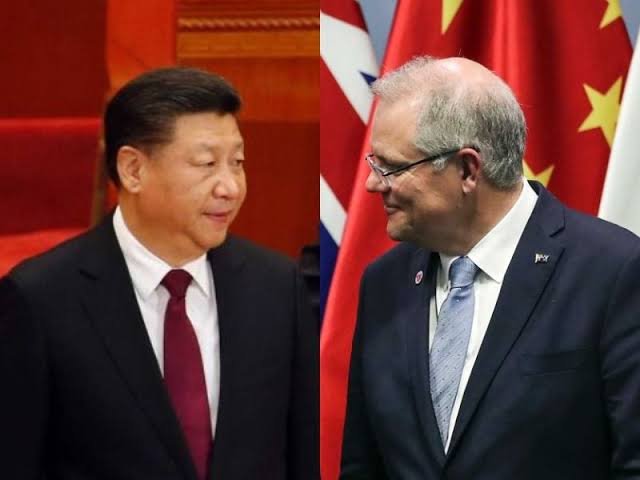‘Australia rejigs defence policy to counter China’s rising expansionism, while India refrains from taking on China’.
New Delhi: On 1 July, while releasing the “2020 Defence Strategic Update”, Australian Prime Minister Scott Morrison signaled a massive change in Australia’s defence policy which is being seen by experts in New Delhi as the first step towards the transformation of the Australian Defence Force from a largely defensive force to a deterrent force, which, as Morrison himself hinted, was due to the China factor.
Morrison, who took over as the Prime Minister less than two years ago, while releasing the country’s defence policy for the coming years, stated that the Indo-Pacific region has become the “epicenter of a rising strategic competition” and the “largely benign security environment” that Australia has enjoyed all these years, has gone.
Morrison, without naming China, made it clear that the rest of the countries in the region, including India, will have choices to make. “Japan, India, the Republic of Korea, the countries of South-East Asia, Indonesia, Malaysia, Singapore, Vietnam and the Pacific all have agency, choices to make, parts to play and of course, so does Australia,” he stated.
He did not elaborate on what were the choices that he was referring to, but the underlying message that it was about how to stop China’s expansionism is clear from the reading of the 60-plus page document and the almost 5,600 words speech that Morrison gave.
This bold move by Australia to counter China’s rising expansionism has given the island country the first mover’s advantage which is likely, in the coming years, to help it emerge as the fulcrum of anti-China movement in the Pacific region, a position which, topic watchers say, was for India’s taking.
“We have missed out on substantial strategic advantages due to the ‘respect for China’ which our diplomats still have, which is now being perceived, maybe rightly so, as our timidity. Australia has released a revamped defence policy that clearly says that they know who their enemy is and that they are ready to tackle it. Our diplomats, on the other hand, are still scared to pronounce ‘China’ at the public forum. Even post Galwan, the words from our diplomats were not strong enough. On one hand, we say that we are the leading regional power of the region, but then when the chance comes to transform words into action, we prefer maintaining the status quo. Australia did not have any direct confrontation with China, yet it has come out and publicly stated that it is revising its defence policy to counter China. What have we done?” a senior government official said, adding that the last time a high-ranking individual in the Indian government who spoke out against China was the then defence minister
The understanding among the people who are keeping a watch on the current India-China border issue is that it was “highly unlikely” that China will now go back from the grey areas which it is occupying now.
“For us, it will continue to remain a grey area or an area which we used to dominate, but the truth on the ground is that now they are occupying these grey areas and they have shown no signs of moving back to pre-May days. As the military and diplomatic talks continue, they might go back from a few points, but that too seems very unlikely now. It is time to accept that the old status quo has now changed,” an official said.
This assessment gains strength as it has now emerged that the People’s Liberation Army (PLA) is laying optic fibre cables at some of the ‘grey areas’ which its forces had started occupying post May. “Why would they lay cables at a place which they feel that they will have to leave in the coming days? Their intent is clear. They do not plan to vacate the grey area,” the official said.
That the talks have become a fruitless exercise is evident from the number of talks that have taken place, without any outcome, between the two countries after the clashes started taking place between the two armies from the last week of April.
On Thursday, members of the Working Mechanism for Consultation & Coordination on India-China Border Affairs (WMCC), from both the sides, met to discuss how to resolve the issue. The meeting, as was expected, ended without any concrete commitments. This was the fourth such meeting. Apart from the WMCC meet, five rounds of commander-level meetings, multiple division and brigade commander level meetings, two meetings of the Indian Ambassador to China with senior officials and an interaction between the two Special Representatives have also taken place in the last three months. “Some pull backs at a few points had taken place in the second week of July. Nothing much has happened after that,” an official said.

